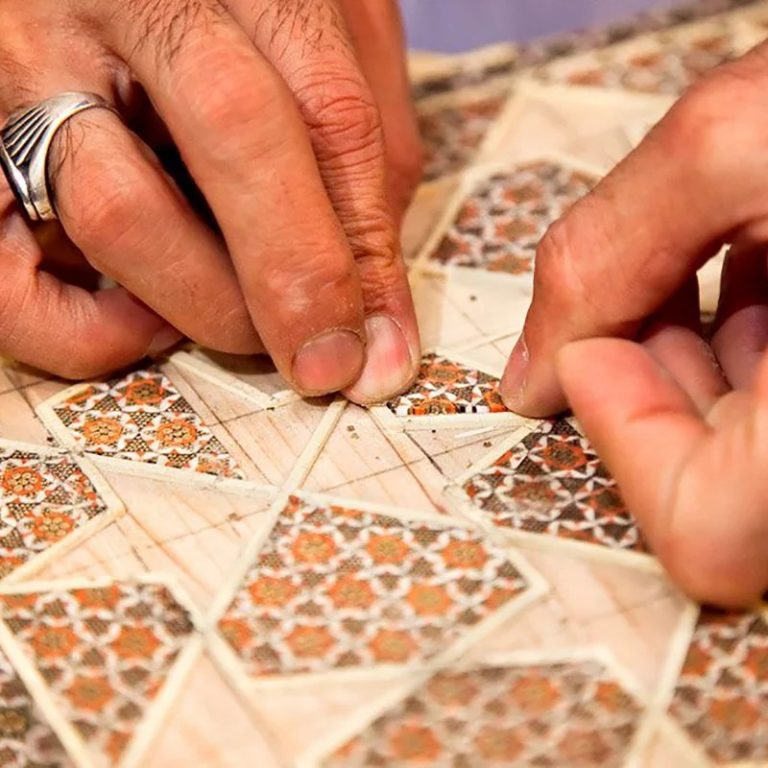Khatamkari: The Art of Persian Inlay
Khatamkari is a traditional Persian craft known for its intricate inlay work, creating stunning geometric patterns using delicate pieces of wood, metal, and bone. Originating in Iran, particularly in the city of Isfahan, Khatamkari has a rich history and is celebrated for its exquisite craftsmanship and meticulous attention to detail.
History and Origins:
The art of Khatamkari dates back to the Safavid era in the 17th century, flourishing under the patronage of Persian kings and nobility. The term ‘Khatamkari’ is derived from the Persian word ‘khatam,’ meaning ‘incrustation,’ reflecting the meticulous process of inlaying different materials to create intricate designs. Skilled artisans, known as ‘khatamkars,’ meticulously handcraft each piece, showcasing their expertise and dedication to preserving this traditional art form.
Techniques and Materials:
Khatamkari involves the meticulous arrangement of tiny polygonal pieces of wood, metal, and bone in geometric patterns on a wooden surface. The materials used in Khatamkari often include fine woods such as ebony, teak, rosewood, brass, copper, and sometimes delicate materials like ivory. Artisans carefully shape, sand, and fit these pieces together to form intricate designs, often incorporating elements of calligraphy, floral motifs, and Islamic patterns.
Symbolism and Design:
The designs in Khatamkari are not only visually striking but also hold symbolic significance. Geometric patterns symbolize unity, infinity, and perfection in Islamic art, reflecting the harmony of the universe. Floral motifs represent beauty, nature, and growth, while calligraphic elements often feature verses from the Quran or poetic verses, adding a spiritual dimension to the artwork.
Preservation and Recognition:
Despite the intricate nature of Khatamkari and the skill required to master this craft, modernization and changing market demands have posed challenges to its preservation. Efforts are being made to safeguard and promote Khatamkari as a valuable cultural heritage. Organizations, artisans, and cultural institutions are working together to raise awareness about this art form and ensure its continuation for future generations.
Contemporary Applications:
While traditionally used to adorn wooden boxes, frames, and decorative objects, Khatamkari has found new applications in contemporary design. Artisans are incorporating Khatamkari into furniture, jewelry, and architectural elements, blending traditional techniques with modern aesthetics. This fusion of old and new not only preserves the heritage of Khatamkari but also showcases its adaptability and timeless beauty.
Conclusion:
Khatamkari stands as a testament to the skill, artistry, and cultural richness of Persian craftsmanship. Through its intricate designs, symbolic motifs, and meticulous craftsmanship, Khatamkari continues to captivate admirers around the world. As a cherished art form with a storied history, Khatamkari represents the enduring legacy of Persian art and the timeless beauty of traditional craftsmanship.

